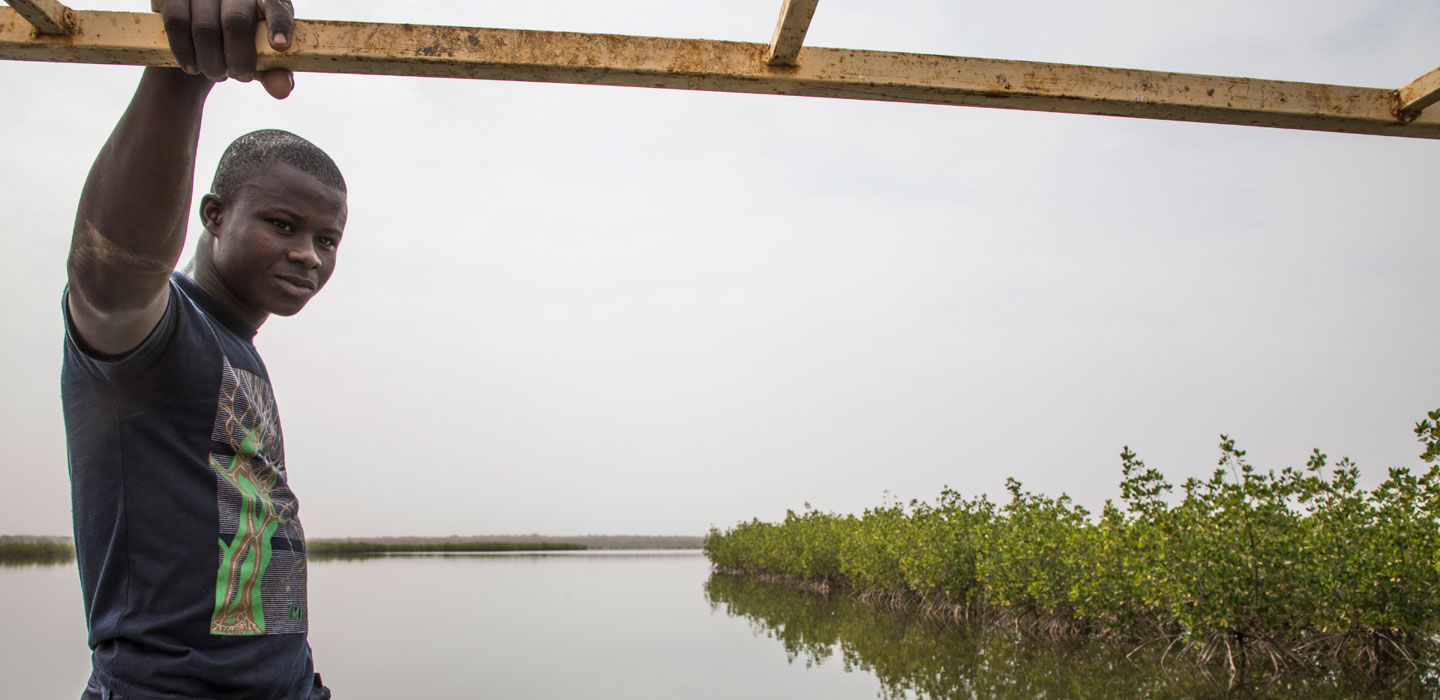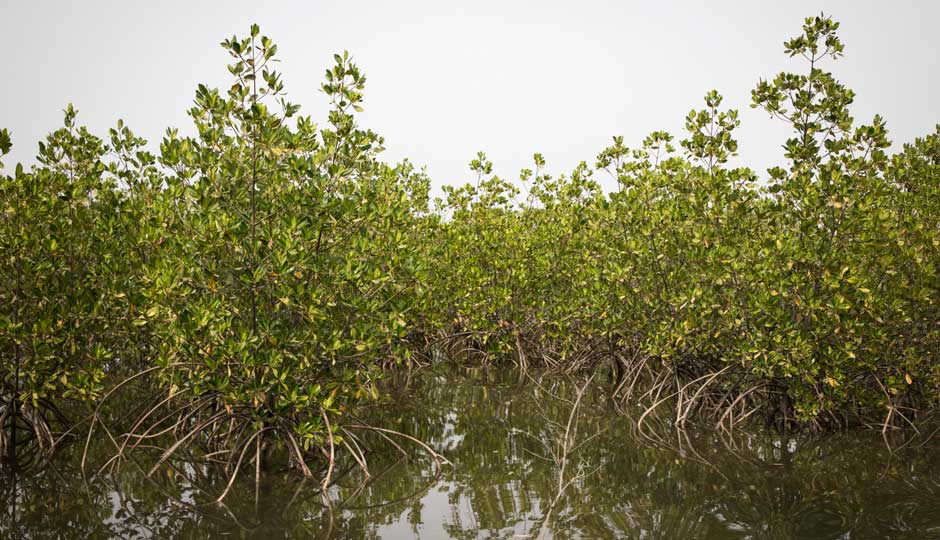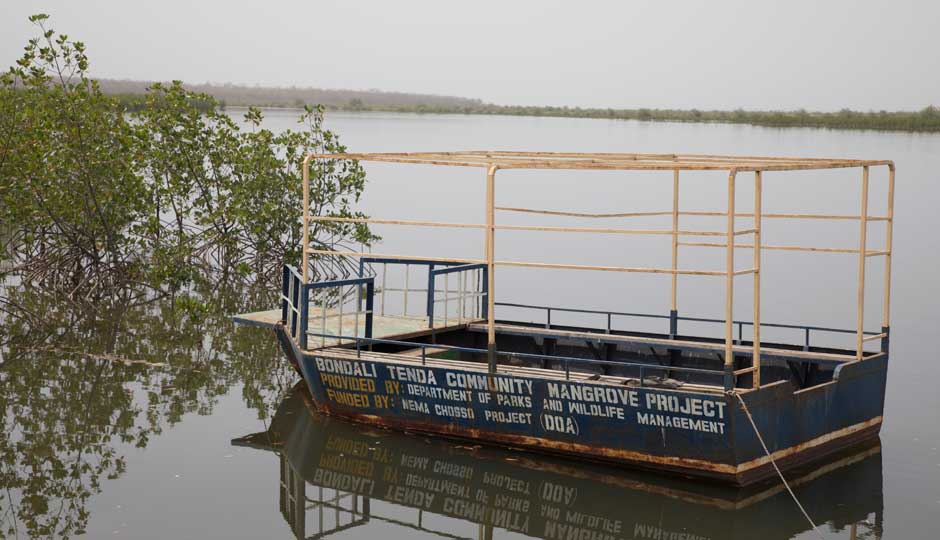Restoring mangroves is saving rural communities in Gambia
IFAD Asset Request Portlet
Asset Publisher
Restoring mangroves is saving rural communities in Gambia
Estimated reading time: 2 minutes
© IFAD/Barbara Gravelli
The intricate roots of the mangrove can be easily recognized from a distance. Their trees and shrubs grow along salty or brackish waters with accumulated sediments in mud. Mangroves are one of the world's most biodiverse ecosystems and play an essential role to ecological balance and community livelihoods. But in many areas across West Africa, these wildlife-rich wetlands are under threat due to the effects of climate change and unsustainable wood cutting.
At the edge of Bondali-Tenda, a small village in Gambia near the border with Senegal's Casamance region, lies a mangrove forest through the Bintang Bolong, the largest tributary of the River Gambia. From there, 15 local families obtain food and income through fishing activities.
 |
| © IFAD/Barbara Gravelli |
For many years its vegetation was severely degraded to the point of leaving huge deforested pockets with no shade and scarce underwater life. While the local mangrove was disappearing, air became drier and fishers struggled to make their living and provide for their families.
This has changed since 2017. With support from IFAD's Adaptation for Smallholder Agriculture Programme (ASAP), the NEMA-CHOSSO project has restored over three hectares of mangrove in Bondali-Tenda. New trees have been planted in degraded areas throughout the river while maintaining mudflats, which serve as a habitat for resident and migratory water birds.
"Before this intervention we could see a large void space over these waters," recalls Ebrima Fatty, a local community leader. "The green landscape is coming back, there are bigger fish and even crocodiles can be seen around here."
The climate irony
Mangroves are particularly vulnerable to climate change. As temperatures and precipitation patterns change, broader tidal ranges are affecting mangroves throughout Gambia and neighbouring countries. Larger tide volumes combined with higher soil salinity have deteriorated swamps across the region.
Ironically, mangroves themselves are powerful resources to address climate change. They can store great amounts of carbon dioxide – more proportionally than any other forest – and thus, their destruction may disastrously release great amounts of greenhouse gases into the atmosphere.
Other benefits
Mangroves play a key role in protecting communities against weather shocks and other climate-related adversities. Their vegetation retains sediments and filter run-off water, preventing soil erosion and siltation. Their roots also serve as effective barriers to the surge of storms, shielding coastal communities against floods.
 |
| © IFAD/Barbara Gravelli |
These dynamic and versatile ecosystems also make environmental and socioeconomic conditions more sustainable as they:
- Contribute to cooling micro-climatic conditions in areas of often high temperatures
- Provide habitat for fishes, oysters, mud crabs and clams, promoting food sources, fishers' incomes and biodiversity
- Serve as fish nurseries, allowing water life reproduction and sustainability
- Provide wood for small community practices, such as fish curing.
Bondali-Tenda is just one example of mangrove restoration supported by IFAD in Gambia. NEMA-CHOSSO has recovered 1,400 hectares all over the country, benefitting around 160,000 people. Another 630 hectares are planned to be restored by the end of the year, which will reach over 40,000 people.
Publication date: 26 August 2019